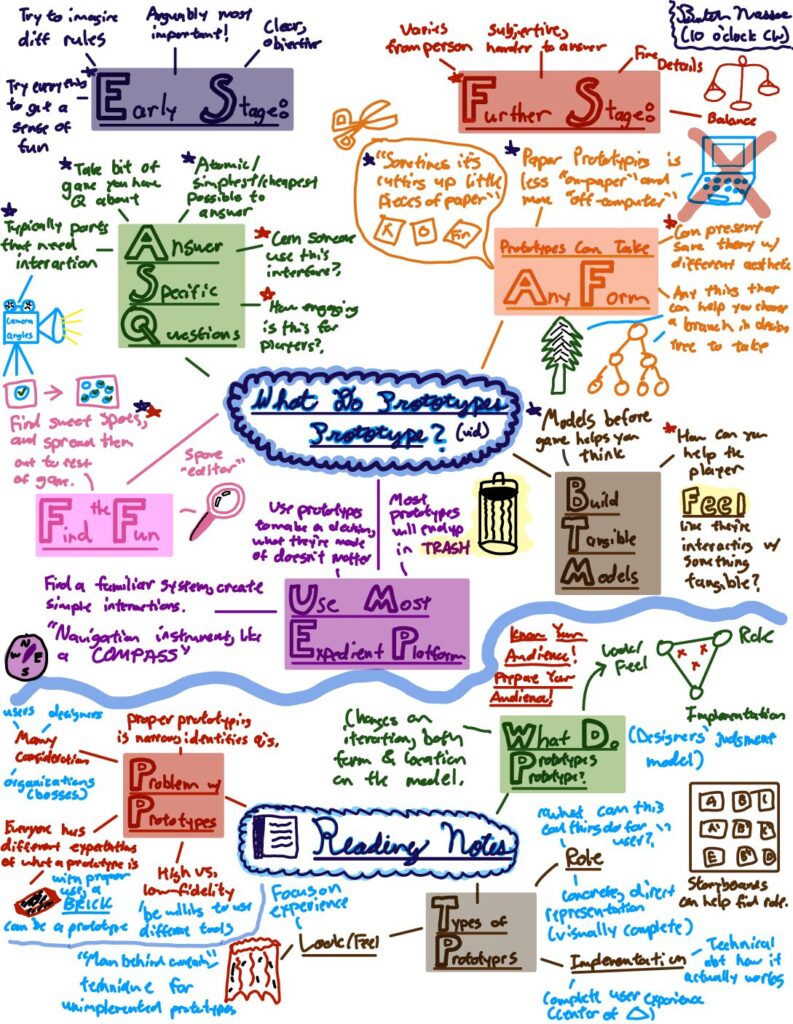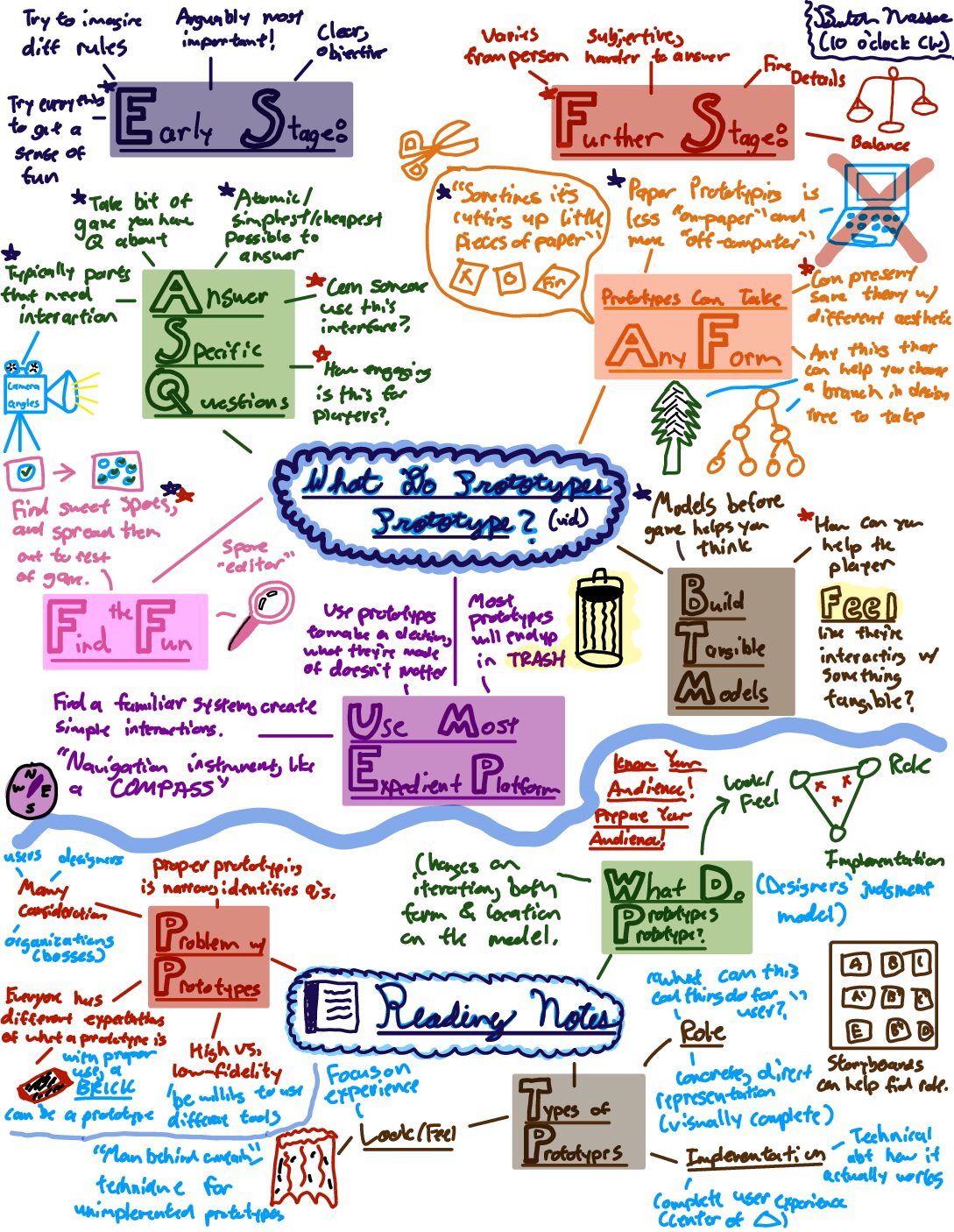Our current game is leaning towards the direction of a “hidden friends” game, where pairs of players have a secret word and must find out who their Friend with the same secret word is, while there are saboteurs (Fake Friends) with hints to secret words who are trying to trick others into picking them as their Friend. It would involve individuals drawing both a shared prompt and including their secret word in a not-too-obvious manner (similar to A Fake Artist Goes to New York), followed by a discussion/verbal component. For this game, I hope to answer the following questions with my prototype:
- What types of hints are optimal to give to a Fake Friend? This is ultimately an important question for game balance, as we want the Fake Friend to be able to sow chaos and potentially trick others, but still leave some responsibility on them to find out exactly what the secret words are/have the opportunity for them to completely miss the mark. We can answer this question by prototyping a variety of types of hints to see how a genre of hints feels for the user experience. For example, the difference between simply giving the entire word, giving parts of the word like hangman, or giving a riddle the Fake Friend must solve, would greatly change the experience of the Fake Friend. My guess is that somewhere in the middle ground (around the riddle or partial obfuscation of the secret words) would be best, since it still gives the Fake Friend role a challenge but doesn’t distract from the intention of the Fake Friend as a force of chaos to challenge and outwit the other players.
- What’s a good pace for each segment of the game? At the moment, we envision a role assignment portion, a drawing portion, and a discussion and/or presentation portion. How much time should be allocated to each portion to create a fun experience? This question is important to ensure that players are fully engaged in each segment (not too short), but can add pressure/time challenges to the game to level the playing field for different levels of artistic or speaking skills (not too long). This prototype would be an implementation prototype requiring most of the game to already be figured out, with adjustments based solely on time. It’s hard to predict the outcome of this at the moment, but I suspect that somewhere in the ~3-5 minutes range for drawing, and 1-3 minute range (either 30 seconds designated for a single player at a time, or 3 minutes for an overall group discussion) might work, as it pressures players at individual time frames and allows for short rounds that would inspire players to play another.
- What’s the scoring system look like for this game? This is essential to answer, as scoring motivators will change how players play the game. If more points are given for properly pairing up than detecting other pairs, nobody will care about keeping their secret word a secret, and the game may not be played as intended. To best answer this question, we’d have to look at how playing both roles feel, and then gauge the difficulty of certain objectives. That makes this mostly an implementation prototype; alternatively, we could simplify this prototype to demonstrating certain types of tasks individually, and asking playtesters which tasks were most fun and most challenging. This could give us a good gauge of how to balance and score tasks for either role. At this stage, I predict that giving more points to detecting other Friends might be valuable, as it pressures pairs to try to be as secretive as possible, whilst still giving enough information away to be found by their Friend.
- What are fair/fun limitations to place on Friends while drawing? This question is best to understand both game balance, and how much challenge would still be fun and engaging for players. For example, if you can just draw your secret word outright, then it may be obvious what the word is to your partner, but not other players. To answer this question, we could start with a pair of shared prompts and secret words and ask playtesters to draw items with varying levels of restrictions. This can help gauge how much struggle levels of restrictions offered, and whether or not this struggle was conducive or detrimental to fun. I predict that a middle ground of preventing explicitly drawing the secret word, as well as adding some “banned” items that cannot be drawn, will be the most fun, as it forces players to think outside the box with their drawings, without being too prohibitive.
I also did a page of sketchnotes/mindmap for the video and readings, here it is! (Hi-Res Link for Zooming Purposes)




